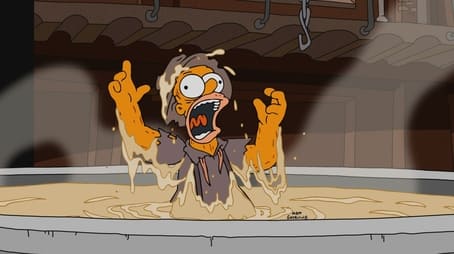
Sorry, we have not watched this yet.

Giant monsters created by political rage threaten to tear the town apart, a Victorian Mr. Burns is jump-scared on Thanksgiving by the ghosts of his abused workers, and Homer bonds with a pair of extra-terrestrial jeans in an unforgettable stop-motion adventure that can only be called… Denim.
Sorry, we have not watched this yet.